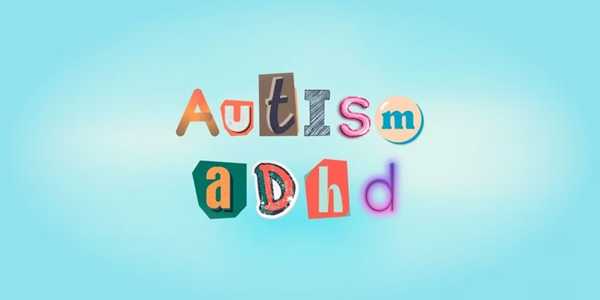What Are Differences Between Autism And ADHD?
Understanding the complexities of neurodevelopmental conditions is crucial in today's world. Autism Spectrum Disorder (ASD) and Attention Deficit Hyperactivity Disorder (ADHD) frequently arise in discussions, often getting conflated due to overlapping behavioural traits. Autism is a developmental disorder defined by challenges with social interaction, repetitive behaviours, and communication obstacles. The effects of Autism can range from slight issues to profound challenges that significantly disrupt daily living and social integration.
On the other hand, ADHD primarily manifests through ongoing patterns of inattention, hyperactivity, and impulsivity, which hinder focus and engagement in tasks. While both conditions may present difficulties in social interactions and concentration, they are fundamentally different disorders that necessitate specific adequate support and comprehension approaches.
It is more than an academic curiosity; knowing the differences and similarities between ASD and ADHD informs how the world will perceive and provide for those struggling with them. Such misunderstandings can lead to inappropriate diagnoses or ineffective treatment approaches, underscoring the need for widespread information on both conditions.
We will start with defining Autism and ADHD so that we can have explicit foundational knowledge, then go into their diagnostic criteria and behavioural traits, myths surrounding both and treatment.

Understanding Autism Spectrum Disorder (ASD)
Autism Spectrum Disorder (ASD) encompasses a broad range of neurological and developmental features that manifest as distinct social and behavioural patterns. The core features include significant difficulties in social reciprocity, as individuals with ASD often struggle with initiating or maintaining conversations and interpreting social cues. Communication may be marked by delays or atypical verbal patterns, such as monotonic speech or obsessively fixating on specific topics without recognizing conversational norms.
Behaviorally, individuals might exhibit restricted interests, adhere rigidly to routines, or display repetitive motions, such as rocking or hand-flapping, primarily to cope with anxiety or sensory overload. As per the Diagnostic and Statistical Manual of Mental Disorders, Fifth Edition (DSM-5), the diagnostic classifications for ASD involve persistent social communication deficits and repetitive behavioural patterns across various contexts. Accurate diagnosis entails comprehensive evaluations from qualified professionals who observe developmental history and real-time behaviours.
Understanding Attention Deficit Hyperactivity Disorder (ADHD)
Attention Deficit Hyperactivity Disorder (ADHD) is another prominent neurodevelopmental disorder, marked mainly by inattentiveness, hyperactivity, and impulsivity. These traits often result in considerable academic, occupational, and social challenges.
Inattention symptoms include difficulties sustaining focus, making careless errors, or being easily sidetracked by outside stimuli. Individuals with ADHD may struggle with organizational tasks and frequently misplace essential items.
Conversely, hyperactivity-impulsivity can manifest in excessive movement, fidgeting, or difficulty remaining seated when required. Impulsive actions may interrupt others during conversations or make spur-of-the-moment decisions without considering potential outcomes.
The DSM-5 outlines that ADHD diagnosis relies on persistent patterns of inattention and/or hyperactivity-impulsivity that disrupt normal functioning or development. Symptoms must persist for at least six months and appear inconsistent with the individual's developmental level.
Both ASD and ADHD represent complex disorders, necessitating tailored interventions to enhance the quality of life for those affected by them.
Key Differences Between Autism And ADHD
1.Social Interaction and Communication
Social skills and communication are dramatically impacted by Autism Spectrum Disorder (ASD). Individuals with Autism often struggle with understanding social cues, such as interpreting body language, voice tones, and facial expressions, making it challenging to form friendships or maintain conversations. For example, a child with Autism may fail to respond when called by name or may struggle to maintain eye contact; these behaviours can be misread by peers as disinterest or aloofness.
In contrast, Attention Deficit Hyperactivity Disorder (ADHD) primarily influences social interaction through impulsivity and a lack of focus. Those with ADHD may frequently interrupt others or find it difficult to wait their turn, leading to impulsive reactions without prior consideration. Additionally, their attention span may be short, further complicating their engagement during social activities. Although both disorders can present hurdles to socialization, the underlying causes differ: ASD typically derives from challenges in interpreting social environments, whereas ADHD is defined by impulsivity and impulsive attention shifts.
2.Behavioral Characteristics
Behavioural patterns in Autism often feature restricted interests and repetitive behaviours. Children on the autism spectrum may immerse themselves in specific topics or hobbies, extensively concentrating on topics that resonate deeply with them. While this focus can bring joy, it may also create social barriers with peers who do not share an identical interest. Repetitive behaviours, including hand-flapping or rocking, often serve to alleviate anxiety or sensory overload; however, they may be misconstrued by others as disruptive or abnormal.
In contrast, those with ADHD generally exhibit high energy levels manifested through hyperactivity and impulsive behaviours, presenting as restlessness or excessive talking, sometimes interrupting peers in classrooms. ADHD-related actions are driven by energy and a lack of self-regulation, while autistic behaviours often function as a self-soothing mechanism. Recognizing these foundational motivations is crucial as it shapes the appropriate responses and interventions for each condition.
3.Cognitive and Learning Styles
When examining cognitive processing, Autism and ADHD reveal distinct patterns. Individuals with Autism frequently exhibit intense attention to detail, which allows them to excel in skill sets requiring precision—traits that are advantageous in fields like mathematics, engineering, and art. However, this tendency for rigid thinking can also yield challenges in adapting to new environments and concepts that demand flexible thinking.
Conversely, individuals with ADHD often shine creatively, showcasing innovative capabilities due to their ability to think divergently. They approach tasks from multiple angles, fostering unique insights and solutions. However, the downside of ADHD's cognitive style manifests in a scattered focus that impedes sustained attention.
In summary, while both conditions pose unique obstacles pertinent to social interaction, behavioural tendencies, and cognitive processing, they additionally house differing strengths that allow individuals to thrive in various settings. Recognizing and understanding these differences proves essential for educators, healthcare professionals, and families involved in providing personalized support to individuals navigating these challenges.
Common Misconceptions
1.Is ADHD a Form Of Autism?
ADHD and Autism Spectrum Disorder are distinctly separate neurodevelopmental disorders, though they are often erroneously linked in public discussions. This prevailing misconception stems from the shared symptoms both conditions exhibit, which can lead to misconceptions regarding their identities. ADHD predominantly presents through inattention, impulsivity, and hyperactivity, while Autism incorporates a broader set of challenges encompassing difficulties in social communication, restricted interests, and repetitive behaviours. Notably, despite some overlapping symptoms, such as similar attention regulation challenges, ADHD should not be interpreted as a form of Autism.
The failure to distinguish the complexities inherent within these disorders arises from public misunderstanding. Both ADHD and autism diagnosis typically rely on behavioural assessments; consequently, externally similar behaviours can breed assumptions of one singular diagnosis. Clarifying the distinct roots and triggers and interpreting how each disorder manifests uniquely is essential for effectively appreciating their individuality. Furthermore, many individuals with ADHD showcase functional strengths in places where those with Autism may face hurdles, thereby underscoring the necessity for specialized treatment modalities tailored to unique presentations.
2.Overlapping Symptoms
The intersection where ADHD and Autism converge renders diagnosing complicated due to symptom overlap. Both disorders may present issues related to attention span, social interaction difficulties, and atypical sensory stimuli responses. For instance, a child experiencing ADHD may struggle with attention in the classroom, mirroring the behaviours seen in children with Autism who may identify with heightened distractions. It's crucial to differentiate the underlying motivations and responses tied to these symptoms, as impulsive actions in ADHD stem from immediate desires. At the same time, those on the autistic spectrum might exhibit behaviours rooted in misunderstandings of social cues.
These differences illuminate the importance of expert healthcare practitioners' precise diagnostic assessments. Misdiagnosing could lead to curative pathways that inadequately address individual needs. By navigating these nuanced distinctions, we enhance the prospect of practical strategies that empower affected individuals while elevating their families' abilities to manage their distinct challenges. Accurate diagnosis and tailored interventions are vital in positively influencing outcomes for those living with ADHD and Autism.
Treatment Approaches
1.Autism Treatment Options
Individuals diagnosed with Autism Spectrum Disorder (ASD) can access a wide array of treatment options customized to meet their requirements. Behavioural therapies, especially Applied Behavior Analysis (ABA), are pivotal in training individuals to enhance social skills, communication, and adaptive behaviours. ABA entitles reinforcing preferred behaviours while minimizing challenging behavioural patterns, making it a practical choice for many families seeking support.
Speech therapy also serves as a cornerstone intervention where therapists collaborate to advance verbal and non-verbal communication skills, helping those with communication difficulties interact more effectively in everyday settings. For individuals facing simultaneous challenges, occupational therapy proves beneficial in aiding life skills development and adjusted responses to sensory difficulties, facilitating more manageable daily activities.
Individualized interventions that courts tailor through the schooling system yield substantial benefits within the educational sphere. Individualized Education Programs (IEPs) allow personal instructional approaches suited to the child's learning needs, ensuring they receive support commensurate with their environment's demands. Assistive technology integration in classrooms can further bolster student engagement and maximize interactions with peers and educators.
Due to Autism's spectrum nature, developing individualized treatment plans remains crucial, as strategies beneficial for one individual may not suit another's needs. Collaboration between family members, educators, and healthcare practitioners proves instrumental in navigating options effectively.
2.ADHD Treatment Options
Treatment for Attention Deficit Hyperactivity Disorder (ADHD) embraces an amalgamation of behavioural therapies and medications tailored to optimal support individual needs. Stimulant medications, including methylphenidate and amphetamines, are frequently applied and can significantly alleviate symptoms of impulsivity and hyperactivity. Nonetheless, side effects may arise, prompting the exploration of non-stimulant medications such as atomoxetine, which can deliver desirable effects without stimulant-related concerns.
Behavioural therapies complement medication regimens by helping individuals cultivate coping mechanisms and organizational skills vital for day-to-day management. Techniques such as cognitive-behavioural therapy (CBT) enable individuals to effectively regulate behaviours and emotions across varying situations, contributing to developing resilience in both academic and social domains.
Given that treatment effectiveness may vary widely, the necessity for continuous assessments and adjustments according to individual responses must be emphasized. Regular healthcare professional follow-ups nurture an alignment of treatment plans with the patient's evolving requirements. Moreover, integrating parental involvement and feedback establishes a holistic approach that positively influences the individual's overarching progression and well-being.
In conclusion, both Autism and ADHD require meticulous care in constructing treatment plans that embrace the unique attributes of each diagnosis while remaining focused on individual needs and responsiveness.

Embracing Neurodiversity
Understanding the key differences and similarities between Autism Spectrum Disorder (ASD) and Attention Deficit Hyperactivity Disorder (ADHD) is foundational for providing optimal support and treatment. While Autism presents challenges predominantly in social interactions and communication, ADHD emphasizes difficulties with attention regulation and impulsivity. Moreover, recognizing overlapping symptoms and traits enables the development of informed, effective interventions. Increasing awareness and knowledge about ASD and ADHD is crucial for combating stigma and ensuring appropriate care. Encouraging ongoing research and open discourse will support a better grasp of these neurodevelopmental conditions, ultimately facilitating better outcomes and a more inclusive society. By fostering a culture that values and understands neurodiversity, we can ensure everyone receives the respect and support they deserve.





